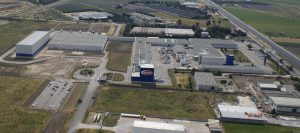The production of delicious Italian pasta requires wheat, water and energy. Researchers from the German Aerospace Center (Deutsches Zentrum fuer Luft- und Raumfahrt; DLR) are now working on methods to power the production and drying processes as sustainably as possible. Objectives include a reduction in the carbon footprint of the pasta production process. In the EU project ‘High storage density solar power plant for Flexible energy systems’ (HiFlex), DLR is working with international partners including Barilla, the world’s largest producer of pasta.

Pilot plant for the demand-based and reliable supply of renewable energy
Over the next two years, a unique energy supply system will be built in the immediate vicinity of the Barilla pasta factory in Foggia, southern Italy. The HiFlex project partners will use this facility to show that they can produce electricity and heat from renewable resources around the clock and provide them reliably and flexibly for the production process. «The purpose of the plant is to demonstrate the technical feasibility and, at the same time, prove the commercial viability of this technology,» says Gabriele Bertoni, overall project manager at the Italian partner company Kinetics Technology, describing the project’s ambitious goals.
Solar tower power plant delivers hot ceramic particles for heat and power generation
A solar tower power plant is the centrepiece of the pilot system. Approximately 500 movable mirrors known as heliostats focus the Sun’s rays onto a single point at the top of the tower, where a special radiation receiver is mounted. This receiver uses the collected solar energy to heat ceramic particles with a diameter of just one millimetre to a temperature of up to 1000 degrees Celsius. The hot particles can then be stored in a large, thermally insulated tank. When required, the heat from the particles is used to produce steam for a power generator or hot gas for industrial process heating. This storage arrangement means that the plant can also provide energy during the night. Once the particles have released their thermal energy and cooled down, they are transferred to a second tank and back from there to the receiver for reheating. The HiFlex project team has also designed a solution for periods of less intense sunshine. “Alternatively, we can use renewable energy from wind and solar power plants or biogas to heat up the particles,» explains Miriam Ebert from the DLR Institute of Solar Research.
“The HiFlex project gives us the opportunity to experiment with innovative methods to supply one of our factories with renewable energy. So, we can say that we are starting to produce pasta using solar power,” says Luca Ruini, Vice President of Health, Safety, Environment and Energy at Barilla.
Benefits of the HiFlex concept – flexible, demand-based and sustainable
The HiFlex system combines several advantages, explains Miriam Ebert: «The plant is highly flexible and enables the supply of industrial processes with electricity and heat at different temperatures on an entirely sustainable basis. In addition, storing excess energy in the form of hot particles can improve the stability of the power grid and compensate for supply fluctuations, as it can be released later, when needed. It is considerably more cost-efficient to store heat than it would be to store electricity, for example in batteries.» Methods of this kind that increase flexibility are vital for the energy supply of the future. This is because the production of heat and power from renewable resources depends on the time of the day and the weather conditions and is therefore subject to fluctuations.
DLR solar receiver as the core component of the pilot plant
For the construction and operation of this pilot plant, DLR is contributing its extensive expertise in the field of concentrating solar systems, steam generators and materials. In addition to the Institute of Solar Research, the Institutes of Engineering Thermodynamics (steam generator concept) and Materials Research (particle development) are also involved in the project. HelioHeat, a private sector partner, is providing the CentRec solar receiver as a key component of the HiFlex system. The receiver was developed and patented at DLR.
Commercial solar-thermal power plants use molten salt as the heat transfer medium. «Our method is based on ceramic particles instead. They can withstand higher temperatures, are low cost and do not present a threat to the environment. Another factor is that they are easier to store and transport when compared to liquid salt, which solidifies when the temperature drops,» says Ebert, summarising the benefits of the new approach. The special receiver has already completed successful tests on the DLR solar tower at its Jülich facility. The power plant will go into operation once the receiver has been delivered to Italy in 2021.
Eleven partners from seven countries are working together on the HiFlex project. They are, in alphabetical order: Barilla (Italy), Duermeier (Germany), German Aerospace Center (Germany), HelioHeat (Germany), Indygotech Minerals (Poland), John Cockerill (Belgium), Kinetics Technology / Next Chem (Italy), Quantis (Switzerland), Sugimat (Spain) and Tekfen (Turkey). The European Union is supporting the project with 13.5 million euro as part of the Horizon 2020 Framework Programme for Research and Innovation. DLR Technology Marketing is contributing additional funds.


